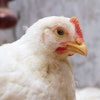An article in Poultry Science authored by scientists at the USDA-ARS unit at West Lafayette, Ind., in collaboration with colleagues at Purdue University documents a comparison of infrared and hot-blade beak treatment of pullets. Mischaracterized by opponents of intensive animal production as "debeaking," the universal application of beak treatment, is a significant welfare consideration with profound implications for efficiency of production.
Significant findings from the study include:
- Beak length was significantly shorter in hens subjected to hot beak trimming compared to infrared treatment
- Beak stumps (neuromas) only occurred in the hens subjected to hot beak treatments (5 hens vs. 0 hens).
- Hens subjected to hot-blade treatment demonstrated higher levels of aggression than hens processed using infrared treatment.
- Feather scores from the head, neck and back of hens in the hot-blade treatment were inferior to hens subjected to infrared beak treatment. Feather scores on other areas including the tail, wings, and breast were unaffected by beak treatment.
- There were no differences in heterophil to lymphocyte ratios, egg production, egg mass or conformational symmetry as measured by shank length and body width.
- Differences were noted with regard to aggressive behaviors between hens in either the top or bottom tiers of the cage installation. This could indicate an interaction between beak treatment and environmental factors such as light intensity or temperature.
This study was conducted on a specific white feathered strain which represent a minority of the caged hen population. It is possible that strain effects could influence the behavior, feathering and aggression displayed by hens subjected to either of the methods of beak treatment. The value or the trial could have been enhanced by including a non-treated group as the industry is under pressure to abandon beak trimming which would result in deleterious effects on welfare, livability and productivity of flocks.
Within the limitations of the experimental design, it can be concluded that infrared beak treatment does not produce any deleterious effect on livability or production and may offer advantages with respect to feather cover and beak morphology.
This research should be repeated using the major white feathered strain. Appropriate control of light intensity and temperature should be imposed and inclusion of a non-treated control of the strain evaluated should be considered. Fecal corticosterone assay and determining the causes of mortality would be beneficial and would supplement information from the ethograms.
 0906EIBeakTreatment
0906EIBeakTreatment

















